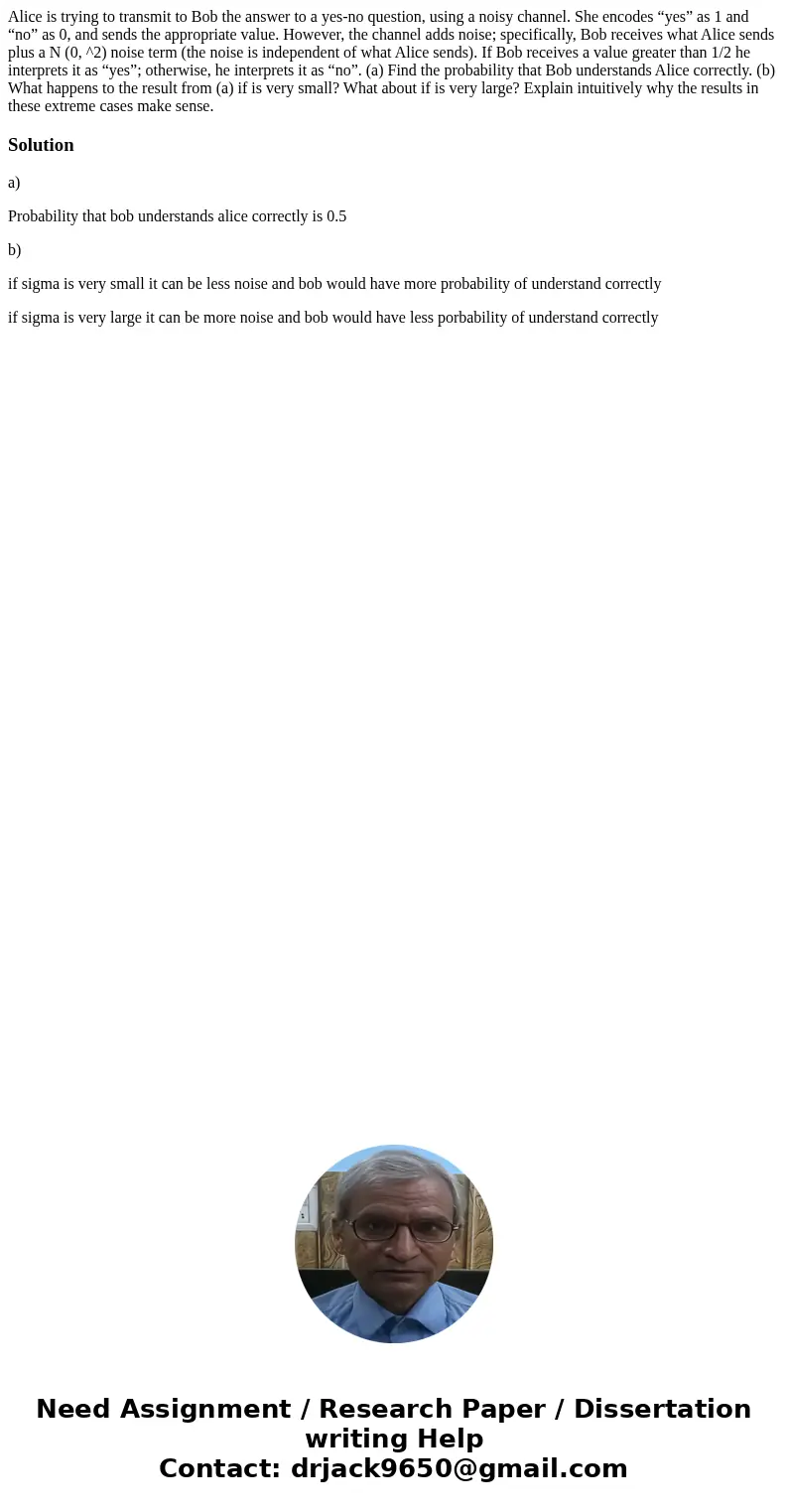Alice is trying to transmit to Bob the answer to a yesno que
Alice is trying to transmit to Bob the answer to a yes-no question, using a noisy channel. She encodes “yes” as 1 and “no” as 0, and sends the appropriate value. However, the channel adds noise; specifically, Bob receives what Alice sends plus a N (0, ^2) noise term (the noise is independent of what Alice sends). If Bob receives a value greater than 1/2 he interprets it as “yes”; otherwise, he interprets it as “no”. (a) Find the probability that Bob understands Alice correctly. (b) What happens to the result from (a) if is very small? What about if is very large? Explain intuitively why the results in these extreme cases make sense.
Solution
a)
Probability that bob understands alice correctly is 0.5
b)
if sigma is very small it can be less noise and bob would have more probability of understand correctly
if sigma is very large it can be more noise and bob would have less porbability of understand correctly

 Homework Sourse
Homework Sourse